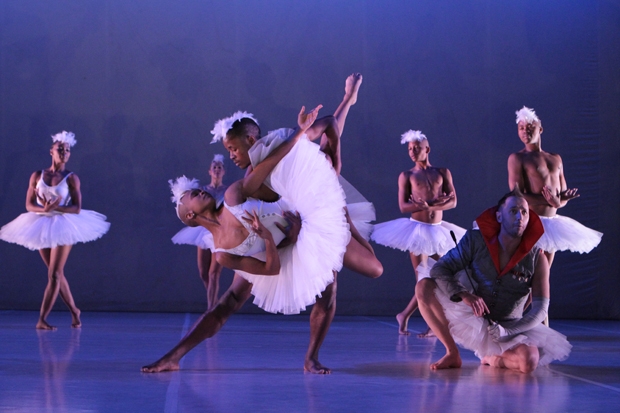Swans, swans, more swans. If the lifespan of a dance critic were calculated by the number of performances of Swan Lake attended, I’d be a few centuries old. Obviously, the list includes many revisions and re-creations of this quintessential ballet, which is the second most revisited in history after The Rite of Spring.
In her 2010 take on the 1890 classic, Johannesburg-born Dada Masilo uses a striking combination of choreographic genres and a politically dense storyline. Those who have seen scores of Swan Lake know that the ‘gay’ slant is not new. Long before Matthew Bourne’s celebrated version, there had been at least 20 productions in which Prince Siegfried’s love for the ‘supernatural’ Swan Queen was interpreted as synonymous with ‘diversity’. I recall the shock of ballet-goers in Rome when the classic ended, in Eugene Polyakov’s reading, with the sorcerer Rothbart luring the prince to bed. It was the early Eighties, and yet John Neumeier had already reworked the ballet around gay King Ludwig in his Illusions — like Swan Lake. Both Roland Petit’s ‘gay’ male swans in Ma Pavlova and Mats Ek’s sexually confused Siegfried were to follow shortly.
Déjà vu is not the problem with Masilo’s work, though. The love of Siegfried for the male Odile, the sole dancer to appear on point, evokes the homophobic horrors that permeate the political and social culture Masilo hails from. As such, the revised narrative adds greatly to the intercultural experiment, in which moments of both traditional and modern dancing go hand in hand with balletic references. It is a pity that it all starts with a comedic class in ballet semiotics, with a parody of a dance academic explaining what ballet is about. She elicits laughter, but also sets the wrong tone for the rest of the evening; the jolliness lingers on, which detracts from the dark political undertones of Masilo’s intended narrative.








Comments
Join the debate for just £1 a month
Be part of the conversation with other Spectator readers by getting your first three months for £3.
UNLOCK ACCESS Just £1 a monthAlready a subscriber? Log in